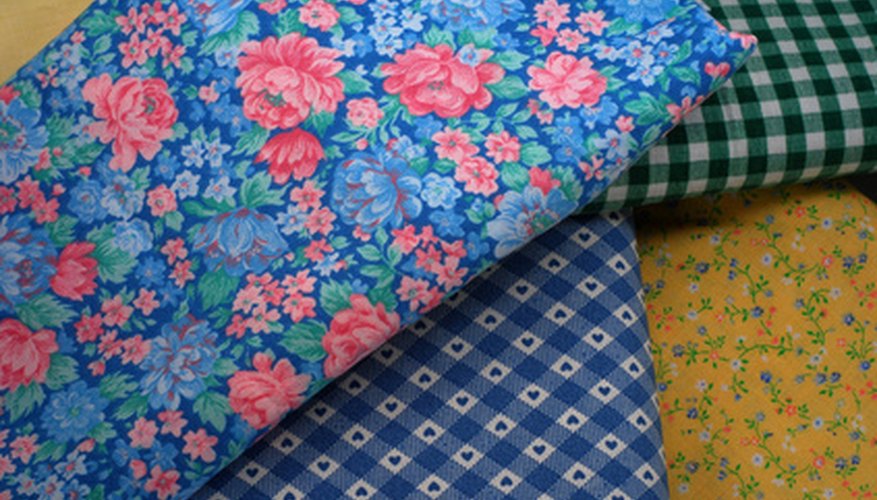When gluing fabric to foam, you want to be careful not to damage the fabric. For example, applying glue directly on a piece of fabric may discolour the fabric. It's best to use a fusible interfacing material to separate the fabric from the glue. The interfacing material offers a protective shield over the fabric from the glue. When gluing foam, it is best to use foam glue and not a hot glue gun, as that may melt the foam material. There are many types of foam glues, and both the fusible interfacing material and foam glue can be found at most craft stores.
- When gluing fabric to foam, you want to be careful not to damage the fabric.
- It's best to use a fusible interfacing material to separate the fabric from the glue.
Lay the fabric on a flat surface and smooth out any small wrinkles. You may need to go over the fabric with an iron if it has large wrinkles.
Lay a lightweight fusible interface material to the wrong side of the fabric. Iron over the fusible interface material to secure it to the fabric.
- Lay a lightweight fusible interface material to the wrong side of the fabric.
- Iron over the fusible interface material to secure it to the fabric.
Cut the fusible interfacing material to the same shape as the fabric.
Lay the foam piece on a sheet of waxed paper. Squirt foam glue onto the foam. Use the foam paintbrush to smooth out the glue, especially along the edges of the foam.
Place the fabric on top of the foam, pattern side up. Adjust it to fit correctly over the foam. Run your hand over it to smooth out any bumps.
Lay a sheet of waxed paper on top of the fabric. Place a heavy book on top of the fabric to keep it flat while it dries. The waxed paper will prevent the fabric from sticking to the book from excess glue.
TIP
Use a disposable foam paintbrush and waxed paper for easy cleanup and disposal once the project is complete.
WARNING
This craft requires adult supervision. Watch all children who are using an iron and scissors.
